Issue Archive
Table of Contents
BLOOD COMMENTARIES
PLENARY PAPER
RUNX1 isoform disequilibrium promotes the development of trisomy 21–associated myeloid leukemia
Trisomy 21 (+21) is a frequent alteration in acute myeloid leukemias (AML) and constitutive in Down syndrome myeloid leukemia (ML-DS). In this Plenary Paper, Gialesaki et al show that ML-DS blasts are dependent on RUNX1 and reveal that disequilibrium among RUNX1 transcripts with disproportionately increased level of RUNX1A is pivotal for DS leukemogenesis and prominent in sporadic AML. This validates a new model for the early stages of ML-DS development and suggests new therapeutic targets for +21 AMLs in general.
REVIEW ARTICLE
Metabolism in acute myeloid leukemia: mechanistic insights and therapeutic targets
Mishra and colleagues review the latest knowledge about metabolic rewiring and cellular reprogramming in acute myeloid leukemias. The authors integrate data on the relationship between genotype and specific metabolic abnormalities and discuss metabolism-directed therapies currently in use or in development.
HOW I TREAT
How I diagnose and treat acute graft-versus-host disease after solid organ transplantation
Acute graft-versus-host disease following solid organ transplantation is rare, and the diagnosis is often delayed. Fatality rates are high. Cooper and Abkowitz use 3 illustrative case studies to highlight existing knowledge and provide diagnostic and therapeutic decision trees to assist clinicians faced with this challenging disease.
CLINICAL TRIALS AND OBSERVATIONS
The von Willebrand factor–binding aptamer rondaptivon pegol as a treatment for severe and nonsevere hemophilia A
Clinical Trials & Observations
von Willebrand factor (VWF) binds factor VIII (FVIII) and determines its half-life. The pegylated aptamer rondaptivon pegol (BT200) increases plasma levels of VWF and FVIII in healthy volunteers. Ay and colleagues report on a phase 2 trial in patients with hemophilia, reporting good tolerability and safety. The drug induces clinically significant increases in levels of FVIII in patients with nonsevere hemophilia and extends the half-life of FVIII concentrates in patients with severe hemophilia A, encouraging further clinical trials.
An open-label, single-arm phase 2 trial of valemetostat for relapsed or refractory adult T-cell leukemia/lymphoma
Clinical Trials & Observations
Adult T-cell leukemia/lymphoma (ATL) is caused by human T-lymphotropic virus type 1 infection, which epigenetically modifies T cells in an enhancer of zeste homolog (EZH)–dependent manner. Izutsu and colleagues report on a phase 2 trial of valemetostat, a dual inhibitor of EZH1 and EZH2, in 25 previously heavily treated patients with relapsed or refractory ATL. The authors report a response rate of 48% (including in patients previously treated with mogamulizumab) and acceptable toxicity, leading to regulatory approval in Japan where ATL is common.
Synthetic lethality in ATL
Clinical Trials & Observations
GENE THERAPY
Adenine base editor–mediated correction of the common and severe IVS1-110 (G>A) β-thalassemia mutation
β-thalassemia is a common recessive genetic disorder characterized by a reduction in β-globin production that results in mild to severe transfusion-dependent anemia. Existing gene therapies have high costs. Using adenine base editors that efficiently repair the mutation without causing the problematic double-stranded DNA breaks inherent with CRISPR/Cas9 systems, Hardouin and colleagues demonstrate in vitro correction of the common IVS1-110 mutation and in vivo resolution of the thalassemic phenotype in preclinical models. This sets the stage for new clinical approaches.
HEMATOPOIESIS AND STEM CELLS
The tetraspanin CD53 protects stressed hematopoietic stem cells via promotion of DREAM complex–mediated quiescence
CD53 is a member of the tetraspanin family of transmembrane proteins that regulate cellular processes such as migration, adhesion, and signaling. Greenberg and colleagues show that CD53 is transiently upregulated in both mouse and human hematopoietic stem cells (HSCs) during inflammatory and proliferative stresses. The authors reveal that this is important to preserve HSC function by promoting the activity of the DREAM complex of negative cell cycle regulators and the return of HSCs to a quiescent state.
IMMUNOBIOLOGY AND IMMUNOTHERAPY
Engineering T cells to suppress acute GVHD and leukemia relapse after allogeneic hematopoietic stem cell transplantation
OX40 is a costimulatory receptor on activated CD4 and a subset of CD8 T cells that is implicated in graft-versus-host disease (GVHD). Mo et al demonstrate that bifunctional human T cells engineered to coexpress an OX40-targeted cytotoxic receptor and a CD19-targeted chimeric antigen receptor protect animals from both fatal xenogeneic GVHD and leukemia relapse, whilst preserving antiviral immunity, in preclinical allogeneic hematopoietic cell transplantation models.
LYMPHOID NEOPLASIA
BTG1 inactivation drives lymphomagenesis and promotes lymphoma dissemination through activation of BCAR1
THROMBOSIS AND HEMOSTASIS
Type 2B von Willebrand disease mutations differentially perturb autoinhibition of the A1 domain
Type 2B von Willebrand disease (VWD) is an inherited bleeding disorder due to a range of mutations in the autoinhibitory A1 domain of von Willebrand factor (VWF), resulting in enhanced binding of VWF to glycoprotein Ibα on platelets, enhanced consumption of platelets, cleavage of VWF, and reduction in large VWF multimers. Using detailed structure-function studies, Legan et al provide the mechanistic details that explain how various individual type 2B mutations affect the function of the autoinhibitory domain differently, providing insight to the variable clinical severity of type 2 VWD seen in patients.
BLOOD WORK
ERRATA
-
Cover Image
Cover Image
![issue cover]()
After BTG1 knock out, overactivation of the BCAR1-RAC1 pathway drives dramatic actin remodeling in lymphoma cells, leading to increased filopodia and dissemination potential, which is targetable with dasatinib. See the article by Delage et al on page 1209.
- PDF Icon Front MatterFront Matter
- PDF Icon Table of ContentsTable of Contents
- PDF Icon Back MatterBack Matter
- PDF Icon Editorial BoardEditorial Board
Advertisement intended for health care professionals
Email alerts
Advertisement intended for health care professionals


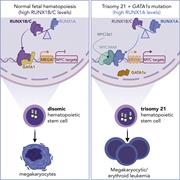

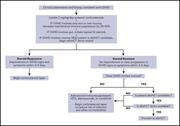
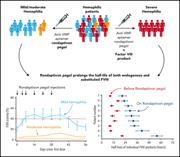
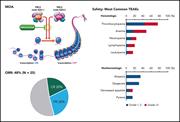

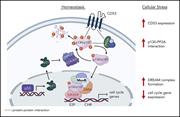
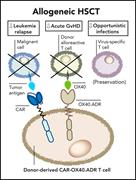
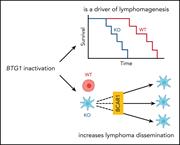


It is more “unbalanced” than you think